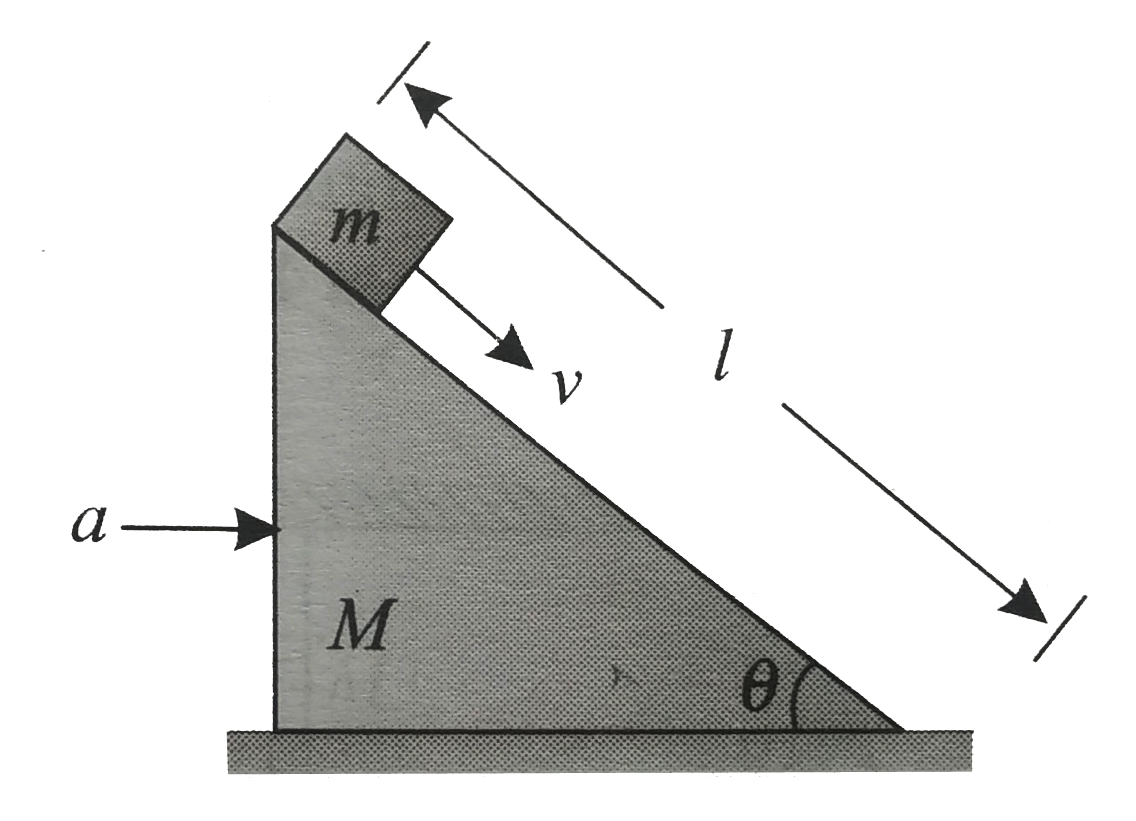A spherical ball of mass 10−6 kg hits a wall 1000 times per second normally with a velocity of 1000 m/s and rebounds with same velocity along the initial direction. The force experienced by the wall is
To solve the problem step by step, we will calculate the force experienced by the wall when a spherical ball hits it 1000 times per second.
Step 1: Understand the problem
We have a spherical ball of mass m=10−6 kg that hits a wall 1000 times per second with a velocity of v=1000 m/s and rebounds with the same velocity in the opposite direction.
Step 2: Calculate the change in momentum (ΔP)
The change in momentum (ΔP) of the ball can be calculated using the formula:
ΔP=m⋅ΔV
Where ΔV is the change in velocity. Since the ball hits the wall and rebounds back, the change in velocity can be calculated as:
ΔV=vfinal−vinitial=−1000m/s−1000m/s=−2000m/s
Now substituting the values:
ΔP=m⋅ΔV=10−6kg⋅(−2000m/s)=−2×10−3kg m/s
Step 3: Calculate the magnitude of momentum change for the wall
The wall experiences the same magnitude of momentum change but in the opposite direction:
ΔPwall=−ΔPball=2×10−3kg m/s
Step 4: Calculate the total momentum change per second
Since the ball hits the wall 1000 times per second, the total change in momentum per second (which is the impulse) is:
ΔPtotal=ΔPwall×number of hits=2×10−3kg m/s×1000=2kg m/s
Step 5: Calculate the force experienced by the wall
The force experienced by the wall can be calculated using the formula:
F=ΔPtotalΔt
Where Δt is the time interval for one hit. Since the ball hits the wall 1000 times per second, the time interval Δt is:
Δt=11000s
Now substituting the values:
F=2kg m/s11000s=2×1000=2N
Final Answer
The force experienced by the wall is 2N.
---
We have a spherical ball of mass m=10−6 kg that hits a wall 1000 times per second with a velocity of v=1000 m/s and rebounds with the same velocity in the opposite direction.
The change in momentum (ΔP) of the ball can be calculated using the formula:
ΔP=m⋅ΔV
Where ΔV is the change in velocity. Since the ball hits the wall and rebounds back, the change in velocity can be calculated as:
ΔV=vfinal−vinitial=−1000m/s−1000m/s=−2000m/s
ΔP=m⋅ΔV=10−6kg⋅(−2000m/s)=−2×10−3kg m/s
The wall experiences the same magnitude of momentum change but in the opposite direction:
ΔPwall=−ΔPball=2×10−3kg m/s
Since the ball hits the wall 1000 times per second, the total change in momentum per second (which is the impulse) is:
ΔPtotal=ΔPwall×number of hits=2×10−3kg m/s×1000=2kg m/s
The force experienced by the wall can be calculated using the formula:
F=ΔPtotalΔt
Where Δt is the time interval for one hit. Since the ball hits the wall 1000 times per second, the time interval Δt is:
Δt=11000s
F=2kg m/s11000s=2×1000=2N
The force experienced by the wall is 2N.
Similar Questions
A body of mass 2kg collides with a wall with speed 100 m/s and rebounds with same speed. If the time of contact was 1/50 second, the force exerted on the wall is
View Solution
A smooth wedge of mass M is pushed with an acceleration a=>anθ and a block of mass m is projected down the slant with a velocity v relative to the wedge.
The horizontal force applied on the wedge is:
View SolutionA horizontal jet of water coming out of a pipe of area of cross - section 20 cm2 hits a vertical wall with a velocity of 10 ms−1 and rebounds with the same speed. The force exerted by water on the wall is,
View Solution2000 small balls, each weighing 1 g, strike one square cm of area per second with a velocity of 100 m/s normal to the surface and rebounds with the same velocity. The pressure on the surface is
View SolutionA ball of mass 600 gm strikes a wall with a velocity of 5ms−1 at an angle 30∘ with the wall and rebounds with the same speed at the same angle with the wall. The change in momentum of the ball is, (in kg ms−1)
View Solution10,000 small balls, each weighing 1 gm , strike one square cm of area per second with a velocity 100 m/s in a normal direction and rebound with the same velocity. The value of pressure on the surface will be
View SolutionA ball of mass 1kg drops vertically on to the floor wit a speed of 25m/s. It rebounds with an initial velocity of 10m/s. What impulse acts on the ball during contact ?
View SolutionA body of mass m collides against a wall with the velocity v and rebounds with the same speed. Its magnitude of change of momentum is
View Solutionn balls each of mass m impinge elastically each second on a surface with velocity u. The average force experienced by the surface will be
View SolutionA small sphere of mass 1kg is moving with a velocity (6ˆi+ˆj)m/s . It hits a fixed smooth wall and rebounds with velocity (4ˆi+ˆj)m/s. The coefficient of restitution between the sphere and the wall is
View Solution
